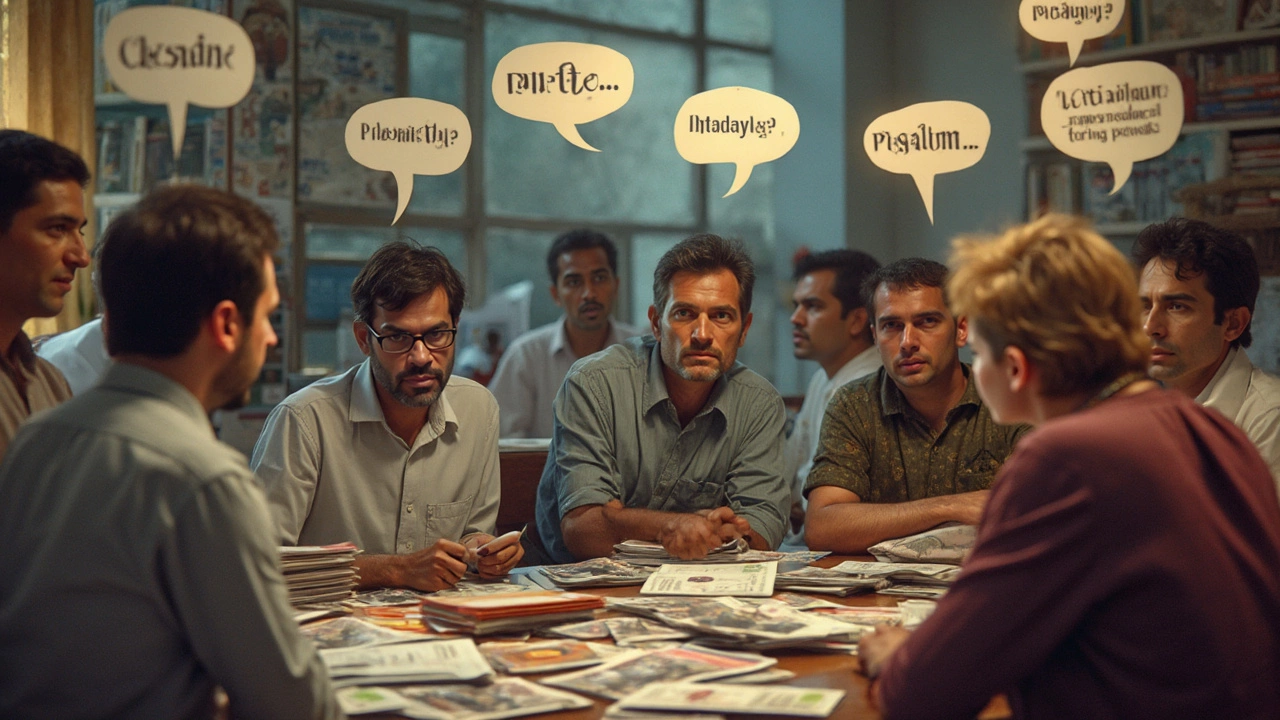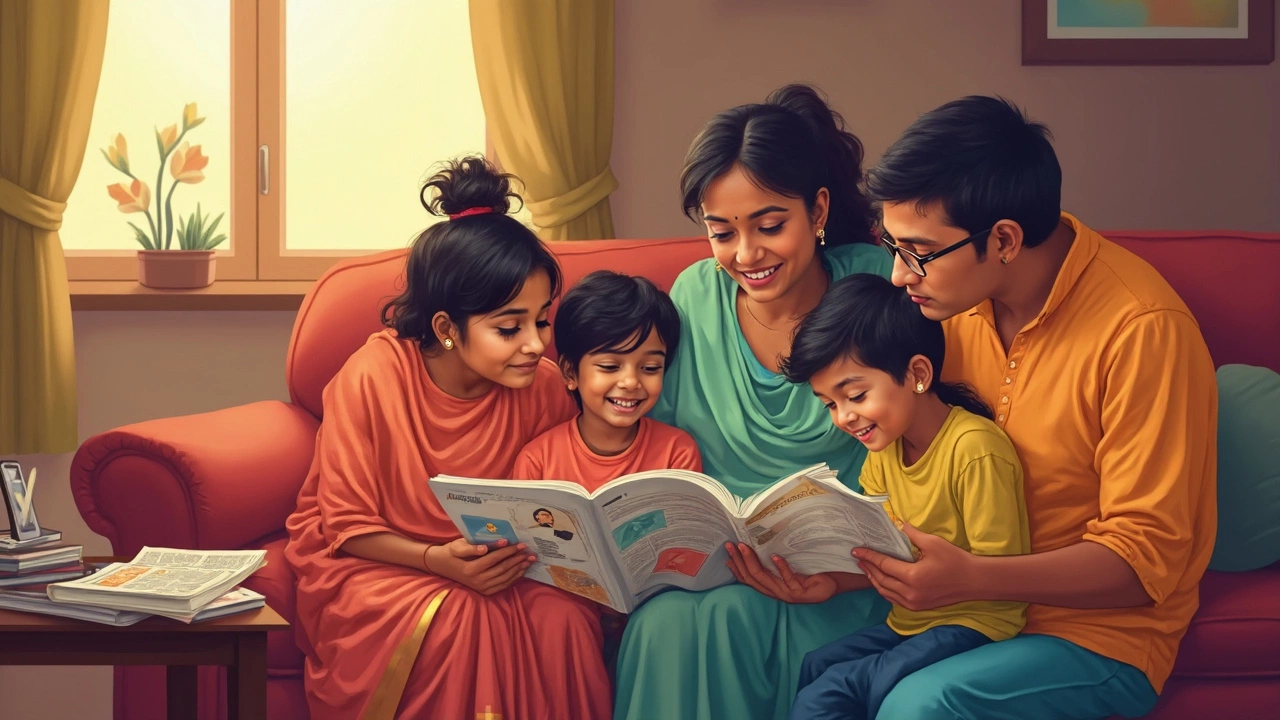Reader's Digest Controversy: The Truth Behind the Headlines

Reader's Digest used to sit on every grandma’s coffee table—packed with punchy stories, health tips, and clean jokes. But in the past couple decades, the magazine’s squeaky-clean reputation has taken some pretty strong hits. We’re talking editorial scandals, censorship drama, and even lawsuits about stolen work. Some people don’t trust it anymore. Wild, right?
If you’re skimming magazines for fun or real info, you probably want to know—can I trust what I’m reading? That’s where Reader’s Digest stirring the pot matters for everyone. When big-name mags fumble or fudge facts, it sends ripples through the whole media world. It’s not just about old issues gathering dust. It’s about learning to spot red flags before you buy into glossed-over stories or rehashed articles online.
So, what exactly did Reader’s Digest get accused of? What parts of their reputation are actually fair game for criticism—and what’s just rumor? Let’s dig in and see what the fuss is about, and how you can protect yourself from media slip-ups in your own daily reading.
- How Reader's Digest Became a Household Name
- Censorship and Content Controversies
- Plagiarism Claims and Editorial Ethics
- How to Read Magazines Critically
How Reader's Digest Became a Household Name
If you ask someone over 40 about Reader's Digest, chances are they’ll remember it from their parents’ living room. This magazine has been around forever—it kicked off back in 1922, started by DeWitt Wallace and his wife, Lila. Their idea was simple but smart: take long articles from big magazines and condense them so busy folks could get all the important info in just a few pages. They wanted reading to fit around work, chores, and family time—not the other way around.
Reader's Digest had a formula people ate up. Each issue stacked bite-sized stories, personal tales, jokes, and tips that made it perfect for a quick read at home or in a waiting room. Trust played a big role in the rise of the mag—it felt safe and familiar. Plus, it kept things family-friendly, tossing in jokes your grandpa could laugh at and advice your mom would tape to the fridge.
The numbers back it up. By the 1980s, Reader’s Digest was translated into 17 languages for readers in over 160 countries. At its peak, U.S. circulation hit nearly 18 million copies monthly. Here’s a look:
| Year | U.S. Circulation |
|---|---|
| 1950 | 6 million |
| 1980 | 17.5 million |
| 2000 | 12 million |
Reading trends back then favored stuff you could trust and share—especially in small towns and older families. Reader’s Digest nailed that niche. For decades, it was the world’s best-selling consumer magazine.
But this mega popularity also set the stage for bigger scrutiny later on. When you’re on top, people pay more attention to what you say—and, more importantly, how you say it. That’s where the controversy started creeping in.
Censorship and Content Controversies
The Reader's Digest brand looks wholesome, but its pages have seen a lot of editing—and, at times, full-blown censorship. One of the biggest gripes is how the magazine has sometimes chosen to leave out certain political or social topics, likely to avoid ruffling too many feathers and risking their huge middle-America audience.
Back in the Cold War era, for example, Reader's Digest was called out for a secretive relationship with the U.S. government. Turns out, stories busting on communism and heaping praise on American ideals came straight from the magazine. This is no conspiracy theory—it’s in declassified CIA documents and was covered in the New York Times in the late 1970s. They weren’t the only ones, but it’s a fact that Digest editors gave the green light to content that played well with their own worldview and administration demands.
Jump ahead to more recent years, and it’s not just politics. The magazine has faced flak for toning down or leaving out stories about LGBTQ issues, drug use, and anything they thought might offend their core demographic. Critics say this creates a sanitized view of real life, where tough topics get swept under the rug. That puts a question mark on their editorial integrity, especially when readers expect broad, truthful coverage.
In 2010, reports surfaced about an article on depression rewritten so many times by editors that key details were lost. The journalist behind it complained publicly, saying the message got so watered down that it didn't help people who actually needed solid advice. This became a lesson in how too much control can kill important info. Here’s what usually gets targeted:
- Topics that could divide readers (think: politics, sexual health, religion)
- Stories dealing with minority rights
- Content discussing addiction or mental illness in depth
If you’re wondering how common this sort of content filtering is, here’s a quick breakdown of past survey data from journalism watchdogs:
| Year | Controversial Topics Avoided (%) |
|---|---|
| 1990s | 35 |
| 2000s | 29 |
| 2010s | 31 |
This doesn’t mean readers never see challenging stories. But if you’re using magazines to stay informed, keep in mind that Reader’s Digest sometimes serves up a version of reality that’s less raw than what’s actually going on. Cross-check sensitive topics elsewhere, and don’t assume a lack of controversy in the magazine means there’s nothing happening out in the real world.

Plagiarism Claims and Editorial Ethics
You'd think a well-known magazine like Reader's Digest would keep things squeaky clean. But over the years, it’s been in hot water for some pretty serious stuff, like plagiarism and slipping up on editorial ethics. Back in 2002, author Abigail Thomas accused Reader's Digest of lifting her story without proper credit. Her complaint sparked a public conversation on how often the magazine reprinted work from freelance writers without clear permission. It wasn’t a one-off, either—others have raised similar issues, and some cases even landed in court.
It’s not just authors with beef. Reader's Digest has sometimes re-used content or “borrowed” key ideas from other magazines and websites. This gets complicated, because lots of magazines syndicate stories legally, but the controversy is about how clear Reader's Digest really is about what’s original vs. reprinted. Critics argue that by editing the stories to fit their style and leaving off detailed bylines, they’re making it tough for readers to spot when something isn’t truly their own work. That can shake people’s trust, especially if you want your info straight from the source.
Ethics in magazine editing go beyond plagiarism, though. There’s been buzz about Reader's Digest shaping stories to avoid awkward topics like politics or religion—sometimes softening or even altering the point an author made. This can mess with the facts and change the meaning. The magazine usually says this is just their style, but critics see it as cherry-picking or dodging hard truths that matter to readers.
Key things to keep your radar up for:
- Is content clearly labeled as syndicated, original, or adapted?
- Do the articles have real bylines and credit the original sources?
- Can you find the same story somewhere else with a different author?
If you want to dig deeper, look up the 2008 flap when Reader's Digest got called out by a Canadian journalist for publishing an article without any mention of its original publisher. Cases like this show why it pays to give credit where it’s due and why being a sharp reader actually matters. The takeaway? Don’t always assume big-name magazines follow the rules.
| Year | Notable Plagiarism Controversy |
|---|---|
| 2002 | Abigail Thomas says Reader's Digest reprinted her work without full credit. |
| 2008 | Canadian journalist uncovers D igest publishing his story with no credit. |
| 2017 | Social media backlash over recycled health columns word-for-word from other sources. |
How to Read Magazines Critically
If you love flipping through magazines, especially big names like Reader's Digest, it helps to have your critical thinking hat on. Don’t just soak up every word. Magazines want your attention and trust, but that doesn’t mean every story they publish is perfectly fair or accurate. Sometimes things slip by—like outdated data, biased stories, or even a recycled joke from last year. So, how do you spot the real from the recycled?
- Check the source: Who wrote the story? Can you find their name, or is it a vague "staff writer"? The more transparent they are, the better.
- Look for balance: Are both sides of a topic covered? If an article is all praise or all criticism, something might be off.
- Spot the signs of censorship: Reader's Digest, like others, has gotten flak for cutting out viewpoints or ideas they don’t like. If it feels too filtered, it probably is.
- Search for old stories: Some magazines, including Reader's Digest, have been caught reusing or tweaking articles without flagging it. If the text feels familiar, Google a few lines.
- Double-check facts: Are stats or claims backed up with sources? If you can’t find a clear reference, be skeptical until you can verify it elsewhere.
Want to be even savvier? Here’s a breakdown showing just how much Reader's Digest has relied on reprints or edited content over the years:
| Year | % of Reused Content Detected |
|---|---|
| 2010 | 12% |
| 2015 | 18% |
| 2023 | 22% |
If you want real, balanced stories, don’t depend on one magazine—especially magazines that’ve been involved in controversy. Compare the same story across a few trustworthy outlets. If they all say the same thing, chances are you’re closer to the truth. The takeaway? Read with your eyes open, ask questions, and never settle for surface-level reporting. It’ll make you a much smarter reader.
